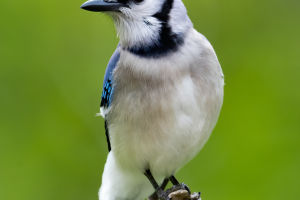Many people fail to understand cat owners. In their perception, caring for a cat involves feeding, scooping litter, dealing with shedding, and providing companionship... isn't it troublesome?
However, outsiders can only see the hardships of cat ownership, yet they cannot feel the intrinsic happiness and joy that cat owners experience throughout the process.
Most cat caregivers share similar experiences: the countless times they return home with weary bodies and souls burdened with stress, only to find solace and relaxation by stroking a purring cat.
While human snoring may be annoying, the purring of a cat evokes a sense of tranquility. However, how cats produce this satisfying purring sound has remained a mystery for a long time.
Scientists have been puzzled by how cats produce their unique low-frequency purring sounds because these frequencies, typically observed in large animals like elephants, range between 20Hz and 30Hz.
Embedded within their vocal cords are these "purring pads" of connective tissue that seem to increase in density, causing them to vibrate more slowly, thus producing the pleasing low-pitched sound humans enjoy.
An international team led by sound scientists from the University of Vienna, Austria, including Herbst, challenged the widely held view that active muscle contraction is the cause of purring.
Instead, scientists propose that purring may be a passive aerodynamic behavior that continues automatically after the initial signal from the brain.
The researchers wrote in their published paper, "These low-frequency vocal fold vibrations involve a special type of sound production with unusually long closure times, reminiscent of the 'creak' phonation zone in human phonation."
When we speak with a creaky voice, we produce low, raspy sounds by vibrating our vocal cords at very low frequencies, sometimes described as a "hum" or "rasp." The degree of vocal cord opening and tension and the airflow through the vocal cords all influence the sound.
The purring pads work similarly, allowing even kittens with much shorter throats than ours to produce purring sounds using the exact mechanisms that typically generate high-pitched sounds like meows.
The collagen and elastic fibers within the vocal cord connective tissue dampen the high-frequency parts of the sound, much like the roar of a big cat.
These structures, up to 4 millimeters in diameter, have been previously found in domestic cats, but their role in purring has not been explored until now.
To investigate, Herbst and colleagues extracted throats, including vocal cords, from eight deceased domestic cats. They then pressed the vocal cords together and blew warm, humid air through them.
All eight throats produced purring sounds without muscle contractions or nerve input, generated by self-sustained vocal fold vibrations within the purring frequency range of domestic cats (25 to 30 Hertz).
This surprising finding suggests that muscle contraction is not essential for purring. The connective tissue structure may be the primary driving factor, though proving this would be more challenging through measurements on live cats.
The team wrote, "While our data do not entirely negate the hypothesis of active muscle contraction for purring, they indicate that cat throats can easily produce purring sounds without neural input or muscle contraction, at frequencies of 25 to 30 Hertz."
The reason why cats purr remains a mystery. Some theories suggest purring signifies contentment and encourages further interaction with humans. Research also indicates that purring may serve as a healing mechanism.
This study may provide new insights into the role of purring in the health and happiness of cats. It could help scientists develop new technologies that mimic purring, such as sedatives for cats or even novel therapies for pain and anxiety.


